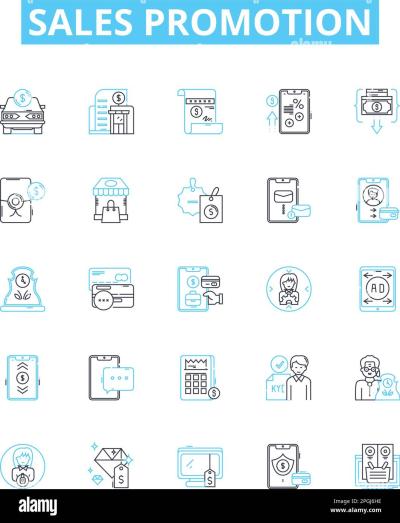In the competitive world of design, having access to high-quality images can significantly elevate your projects. Alamy, a stock photography platform, offers a vast collection of images that can enhance your design work. Understanding how to utilize these resources effectively can set your business apart and improve client satisfaction.
Understanding the Importance of Quality Imagery in Design
 Quality imagery is a cornerstone of effective design. It plays a critical role in communicating the intended message, evoking emotions, and establishing brand identity. Here are some reasons why quality imagery matters:
Quality imagery is a cornerstone of effective design. It plays a critical role in communicating the intended message, evoking emotions, and establishing brand identity. Here are some reasons why quality imagery matters:
- First Impressions: Quality images create positive first impressions, making projects look more professional and appealing.
- Brand Consistency: High-quality imagery helps maintain a consistent brand voice across various platforms.
- Engagement: Engaging visuals catch the audience’s attention, increasing engagement rates on digital platforms.
- Storytelling: Images can tell a story without words, enhancing the narrative of the design.
- Versatility: Quality images can be used across different mediums, from web design to print materials.
By prioritizing quality imagery, designers can create a lasting impact, ensuring their work resonates with clients and audiences alike.
What is Alamy and How Does it Work
 Alamy is a leading stock photography agency that provides a platform for photographers to sell their images. With millions of high-quality images in its library, Alamy caters to various design needs. Here’s how it works:
Alamy is a leading stock photography agency that provides a platform for photographers to sell their images. With millions of high-quality images in its library, Alamy caters to various design needs. Here’s how it works:
| Feature | Description |
|---|---|
| Image Library | A vast collection of images across diverse categories, including nature, business, and lifestyle. |
| Licensing Options | Flexible licensing options allow designers to choose according to their project needs. |
| Search Functionality | Advanced search filters help find the perfect image quickly. |
| Quality Control | Only high-quality images are accepted, ensuring a premium selection for users. |
| Ease of Use | User-friendly interface makes it simple to navigate and purchase images. |
Leveraging Alamy‘s diverse array of high-quality images can enhance your design projects, providing the visual impact necessary to engage audiences effectively.
Creating an Alamy Account for Your Design Projects
If you’re serious about utilizing Alamy images for your design work, the first step is to create an account. Fortunately, the process is straightforward and can be completed in just a few simple steps. Here’s how to get started:
- Visit the Alamy website: Navigate to Alamy.com in your browser.
- Click on the ‘Join’ button: Located at the top right corner of the homepage, this button will guide you to the registration page.
- Fill out the required information: You’ll need to provide your name, email address, and a secure password. Make sure your password is strong to keep your account secure!
- Accept the terms and conditions: It’s a good idea to read through Alamy‘s terms to understand how their licensing works.
- Verify your email: After registering, you’ll receive a verification email. Simply click the link in that email to activate your account.
Once you have an account, you can browse through Alamy’s extensive library of high-quality images. You don’t need to commit to a subscription; you have the flexibility to purchase images as you need them, making it an excellent choice for designers working on varied projects. By having an Alamy account, you can save your favorite images, create collections specific to projects, and even get alerts for new images that match your search criteria. This can save you time and streamline your design process significantly!
Searching and Selecting the Right Images on Alamy
Now that you have your Alamy account set up, it’s time to dive into the vast ocean of images available to you. The key to finding the perfect images for your design projects lies in knowing how to effectively search and select them. Here are some tips to help you navigate the process:
- Use specific keywords: Start with general terms related to your project. If you’re looking for a sunset, you might begin with “sunset” and then refine it with additional keywords like “beach” or “tropical.”
- Utilize filters: Alamy offers various filters to narrow down your search results, including image type (e.g., photos, vectors, illustrations), orientation (landscape or portrait), and more.
- Check licenses: Always pay attention to the licensing agreements for each image. Ensure you choose images that fit the intended use in your project—this can save you from potential legal issues down the line.
- Preview images: Zoom in and check the image details. Ensure that the resolution meets your project requirements, especially if you’re planning to print the images.
- Look at similar images: If you find an image you love, don’t forget to check Alamy’s suggestions for similar images. This can often help you discover hidden gems that perfectly complement your design.
Lastly, take advantage of your account’s ability to create collections. As you browse and find images that resonate with your projects, save them to dedicated collections. This not only keeps your work organized but also aids in efficient project management. Happy searching!
Optimizing Your Workflow with Alamy Images
When it comes to streamlining your design process, leveraging Alamy images can be a game-changer. Here’s how you can optimize your workflow effectively:
- Search Functionality: Alamy offers a robust search feature that allows you to find the perfect images quickly. Use relevant keywords, filters, and categories to narrow down your options. This can save you a lot of time!
- Create Collections: As you browse through images, consider creating collections for different projects. This way, you can easily access and manage images relevant to each design without sifting through hundreds of options later.
- License Management: Keeping track of image licenses is crucial. Alamy provides clear licensing information for each image. Make a habit of checking this before downloading to ensure compliance and avoid any legal headaches.
- Integration with Design Tools: Some design software, such as Adobe Creative Suite, allows image integration. By connecting your Alamy account with these tools, you can drag and drop images directly into your projects, accelerating the design process.
- Bulk Downloads: If you need multiple images at once, Alamy’s bulk download feature can be a real time-saver. Just select your desired images, and download them all in one go.
By incorporating these practices into your routine, you can streamline your design projects, allowing you to focus more on creativity and less on logistics.
Enhancing Your Designs with License Compliance
When using images from Alamy, understanding license compliance is vital to protecting your work and maintaining your professional integrity. Let’s dive into how you can enhance your designs while ensuring you’re on the right side of copyright law:
- Understand Licensing Types: Alamy offers various licenses such as Royalty-Free and Rights Managed. Be sure to familiarize yourself with these options to select images that best suit your project needs without infringing on copyright.
- Read the Fine Print: Always check the specific usage rights associated with each image. Different images come with different restrictions on how they can be used, affecting everything from print runs to geographic distribution.
- Document Everything: Maintain a record of the images you use, along with their licenses. This will come in handy if questions arise about usage or if you need to prove your rights to use an image in future discussions.
- Attribution Practice: While many Royalty-Free images do not require attribution, it’s a good practice to credit the photographer or source when possible. This not only respects the artist’s work but also enhances your credibility as a designer.
- Stay Updated: Licensing terms can change, so it’s wise to keep up with any updates from Alamy or other stock image sources you use. Being informed helps prevent any unintentional violations.
By prioritizing license compliance, you enhance your designs and protect your professional reputation, ensuring your design business thrives ethically and legally.
Tips for Integrating Alamy Images into Your Design Portfolio
Integrating Alamy images into your design portfolio can elevate your work and provide a professional touch. Here are some tips to help you make the most out of Alamy’s extensive library:
- Choose Relevant Images: Always select images that align with your design style and the message of your projects. This ensures a cohesive look and feel throughout your portfolio.
- Contextualize the Images: Instead of placing images haphazardly, integrate them within the context of your work. Show how these images enhance your designs, whether in web layouts, branding mockups, or print materials.
- Quality Over Quantity: It’s better to have a few well-chosen images that resonate with your audience than to overload your portfolio with too many unrelated images. Aim for consistency and clarity.
- Consider Licensing: Ensure that you are aware of the licensing agreements for any Alamy image you use. Proper licensing not only protects your business but also reinforces professionalism.
- Update Regularly: Keep your portfolio fresh by regularly updating your designs and swapping out images. This reflects your growth as a designer and keeps your work current.
Remember, your portfolio is a reflection of you as a designer, and using Alamy images can significantly enhance your storytelling ability in your projects.
Showcasing Your Designs: Best Practices
When it comes to showcasing your designs, first impressions matter. Here are some best practices to ensure your work gets the attention it deserves:
- High-Quality Mockups: Always use high-quality mockups to present your designs. This adds realism and helps potential clients visualize how your design will look in the real world.
- Tell a Story: Frame your projects with a narrative. Explain your design process, the challenges faced, and how you overcame them. This adds depth and engages viewers.
- Use a Clean Layout: A clutter-free layout is essential for showcasing your work effectively. Use ample white space and avoid overwhelming your audience with too many designs at once.
- Highlight Collaboration: If your design process involved collaboration, mention the teams or clients you worked with. This can build credibility and showcase your ability to work well with others.
- Responsive Design: Make sure that your online portfolio is responsive and looks great on both desktop and mobile devices. A seamless user experience is vital.
By applying these best practices, you can create an impressive showcase of your work that captivates clients and sets you apart in the competitive design market.
Conclusion and Next Steps for Your Design Business
As we’ve explored, leveraging Alamy images can significantly enhance the design projects you undertake. From creating visually stunning marketing materials to developing compelling digital experiences, the right images can set your work apart. Here are some next steps to consider for your design business:
- Create an Alamy Account: If you haven’t already, set up an Alamy account to gain access to millions of high-quality stock images tailored to your needs.
- Explore and Curate: Spend some time browsing through Alamy’s extensive library. Create collections of images that align with your design aesthetic and client needs.
- Experiment with Licensing: Understand the different licensing options available on Alamy and choose the ones that suit your projects best. This ensures legal use while maximizing your design potential.
- Stay Updated: Regularly check for new images and trends on Alamy. Fresh, trending visuals can give your designs a timely edge.
- Engage with Clients: Show potential clients how you can enhance their brand with Alamy images. This could be showcasing a mockup using specific images to help them visualize the end result.
In conclusion, the integration of Alamy images into your design workflow can greatly boost your creativity, efficiency, and client satisfaction. Embrace these resources to not only elevate your design projects but also to stay competitive in an ever-evolving industry. Happy designing!


